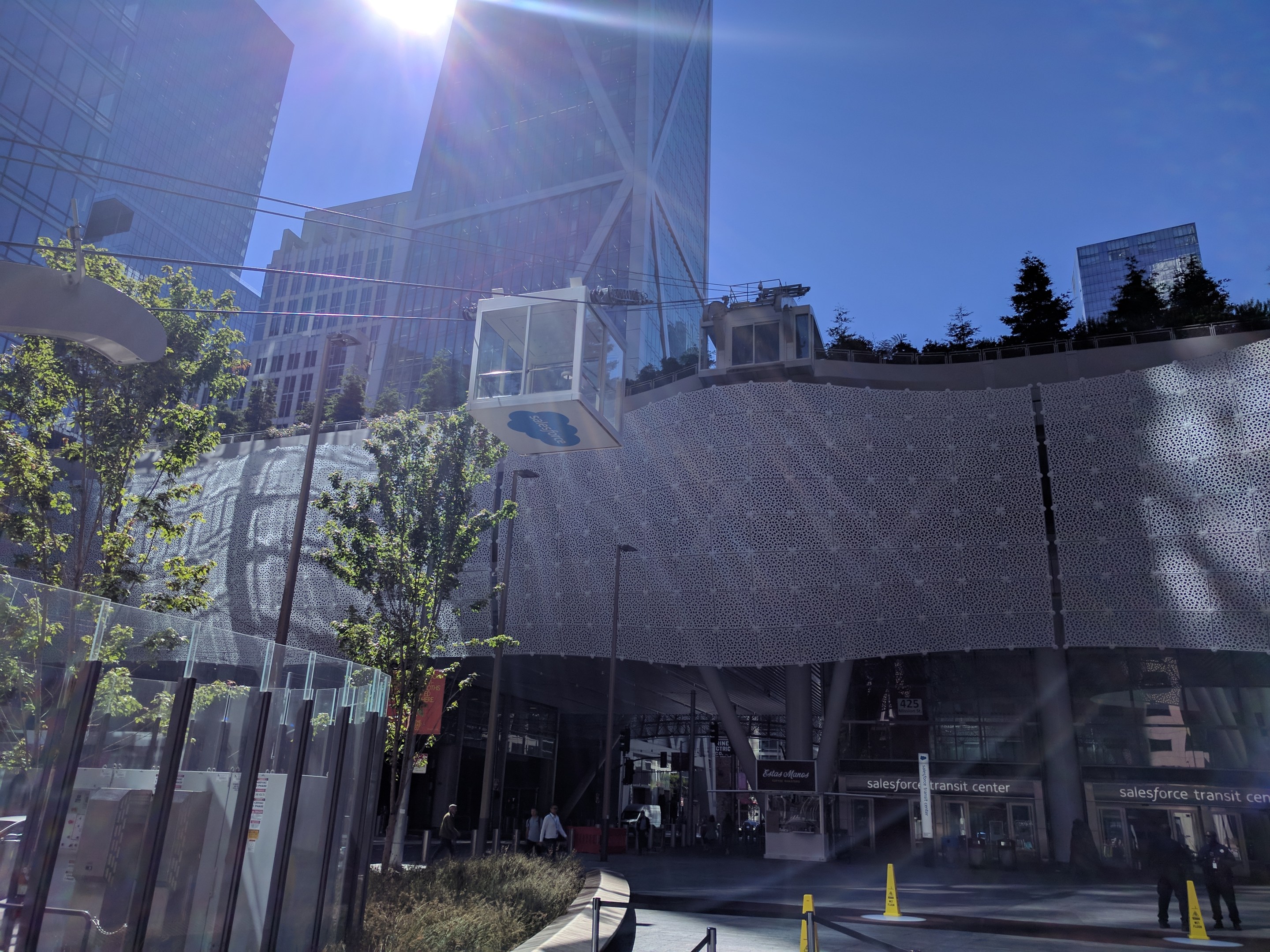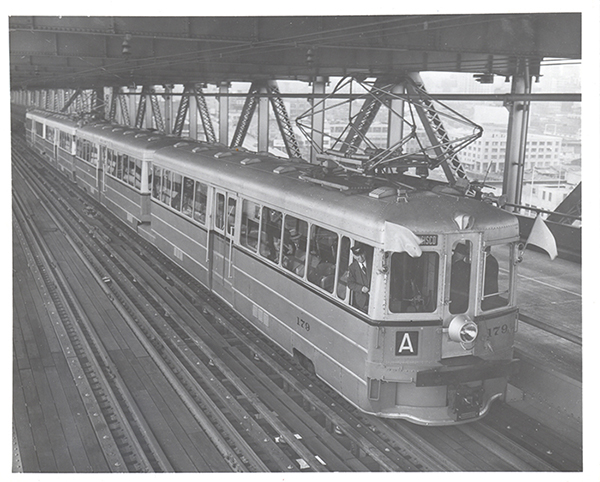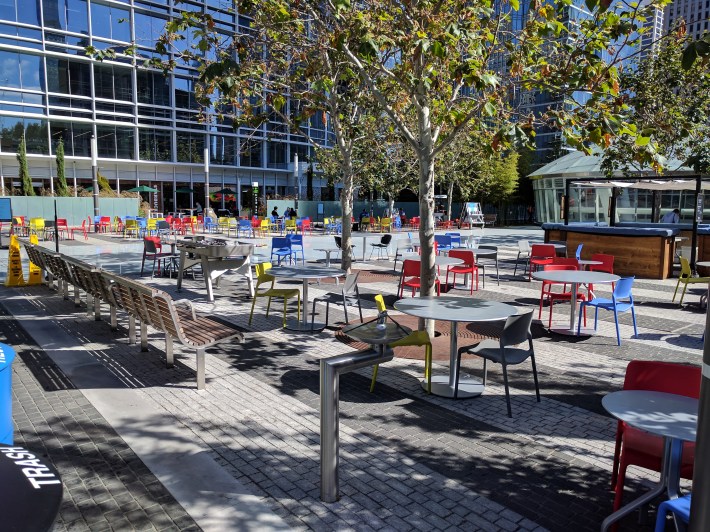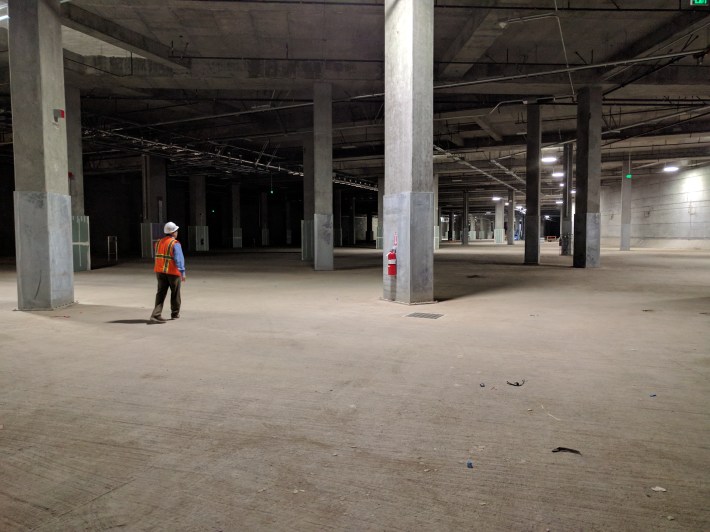Editorial: Gondola for a Train Station with No Trains
5:54 PM PDT on July 12, 2019

The Transit Center’s gondola was the only “transit” on hand Thursday morning. Photos: Streetsblog/Rudick
Tomorrow, Saturday, buses are finally supposed to return to the Salesforce Transit Center, nine months after cracked beams forced its closure last September.
I went for my first return visit Thursday morning, mainly to try out the gondola that runs from the street to the rooftop garden.
My visit to the building was very different from when the $2.6 billion structure opened last summer.
I got there around ten in the morning. No fanfare. Not many people. And the staff seemed dour.
The gondola was shut down. I was told they were doing a security sweep or, alternatively, that they were cleaning it. It would open again "soon."

As most readers know, the new center replaced the 1939 Transbay Terminal, which was demolished in 2010. The new building has a rooftop garden, retail space, an entire upper floor for AC Transit buses coming off the Oakland Bay Bridge and Muni bus service to Treasure Island, and an empty basement that will one day be the home of Caltrain and high-speed rail.
It was pitched to decisionmakers and the public as a "Grand Central Station" of the west.
But thanks to delays with the downtown extension project--a tunnel to connect Caltrain's mainline with this location--it'll be at least another eight years before any trains get there. So, for now--or starting tomorrow anyway--the Salesforce Transit Center is exactly what the naysayers call it: "The world's most expensive bus stop."
But as we've pointed out before, bus riders don't need a giant building as much as reliable service that gets them from A to B.

In 1959, the East Bay removed its Key System electric streetcar and other commuter train networks and replaced them with bus lines. The old Transbay Terminal, originally serving trains crossing the Oakland Bay Bridge, was converted into a big bus station.
But converting the terminal into a bus station never made sense, except that the building was already there. Trains need big stations. Buses don't. The advantage of a bus is, although it lacks the capacity or speed of a train, it can take you to multiple, flexible destinations.
Instead of having AC transit go to the new center, why not create bus-only lanes on the bridge and along the Embarcadero and elsewhere, to give East Bay commuters reliable, one-seat rides to multiple locations?
After BART opened its Transbay tube, in 1974, having a single big bus terminal for East Bay commuters made even less sense.
Today, Transbay buses only carry 14,500 riders a day, versus the 70,000 BART carries under the Bay just during peak periods. Upgrades to BART will increase that capacity by around 45 percent in the next few years.
So what's the point in continuing to have AC Transit buses go to a single point in San Francisco, especially a location that's so close to BART's Embarcadero station?
Is it possible that the cracked beams and cost overruns could have been avoided if they'd forgone the bus deck and built a conventional train station? Designs could have been adapted from one of the hundreds of beautiful, arch-roofed railway stations on the East Coast or Europe. New York's Grand Central Station is over 100 years old--with no cracks.
It's almost as if the goal were to keep AC Transit buses off of San Francisco streets.

The gondola finally opened later that morning, so I finally got my ride. The views are nice, but the views from the roof deck garden are equally if not more impressive. And the elevators and escalators are a faster way to get up to it.
Perhaps the short gondola ride is a good metaphor for the center overall. Because all I could think was, "what exactly is the point of this thing?"
Until city leaders get the tunnel built so trains can come here, there really isn't one.

Read More:
Stay in touch
Sign up for our free newsletter
More from Streetsblog San Francisco
Independent Safety Advocates Beef up the Wiggle
Signs and soft-hit posts installed by advocates make the Wiggle bike route calmer and safer for cyclists and pedestrians




